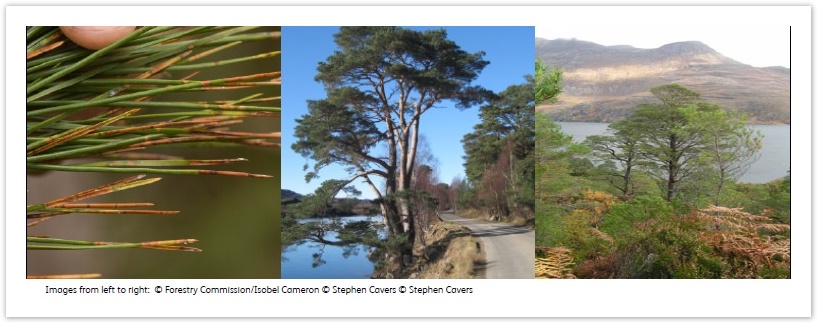Page History
...
Promoting resilience of UK tree species to novel pests and pathogens: ecological and evolutionary solutions
Led by Dr Stephen Cavers, Natural Environment Research Council, Centre for Ecology and Hydrology
...
Using the example of Scots pine, an important native tree species, this project will assess variation in three key threat species: Dothistroma needle blight, the pine-tree lappet moth and pine pitch canker. It will test variation in Scots pine’s resistance to these threats and, using new and existing field trials, measure the extent to which Scots pine populations may be able to adapt. At the same time, by working with the public and with those who manage and use trees, the researchers hope to find ways to use the biological information to make change happen on the ground. Although Scots pine will be the case study species, the objective of the project is to create an experimental template and online resources for gathering similar information in other tree species. The researchers hope this can lay the groundwork for a comprehensive synthesis of information on all of the UK’s important tree species, and help to improve the resilience of forests across the country.
Project website www.protree.net
This project is in partnership with the University of Aberdeen, The University of Edinburgh, SRUC, Royal Botanic Gardens, The James Hutton Institute and Forest Research (project participants).
Specific objectives (edited for this web site):
We will focus on the native tree species Scots pine, initiating new studies that bring together and enhance existing and ongoing research. We will structure our research around three questions:
1. How variable and adaptable are the threat species? We will focus on one current (Dothistroma needle blight), one newly recognised (pine-tree Lappet moth) and one future (pine pitch canker) threat to show the range of variables that determine the severity of a threat. We will assess origins, genetic diversity and evolution capacity of threat species, and their interactions with management practices and landscape structure, such as density and distribution of host.
2. How much variation and adaptive potential is present in the host? Tree species have a large internal capacity to adapt through evolutionary change, due to high levels of genetic diversity, effective gene flow and high heritability of phenotypic traits. We will assess the capacity of a tree
species to respond to threats, by estimating variability in genotype and phenotype and how they underlie variation in host resistance to threats. We will assess genomic diversity, phenotypic diversity in Scots pine, and variation in the endophyte community.
3. What management options exist for increasing resilience to current and future threats? To ensure relevance of project outcome to stakeholders, we will seek early and ongoing involvement multi-way communications among stakeholders - scientists, policymakers, and practitioners.
4. Finally, we will aim for a legacy, for the focal species, for other tree species and for any other plant - centred on a spatially organised, synthesised database; an analysis template showing how to assess tree species for long-term health; and an holistic approach that prioritises the tree species itself.
Further Information
| Section | ||||||||||||||||||||||||||||||||||||
|---|---|---|---|---|---|---|---|---|---|---|---|---|---|---|---|---|---|---|---|---|---|---|---|---|---|---|---|---|---|---|---|---|---|---|---|---|
| ||||||||||||||||||||||||||||||||||||
| ||||||||||||||||||||||||||||||||||||
| Section | ||||||||||||||||||||||||||||||||||||
| ||||||||||||||||||||||||||||||||||||
|
...
|
